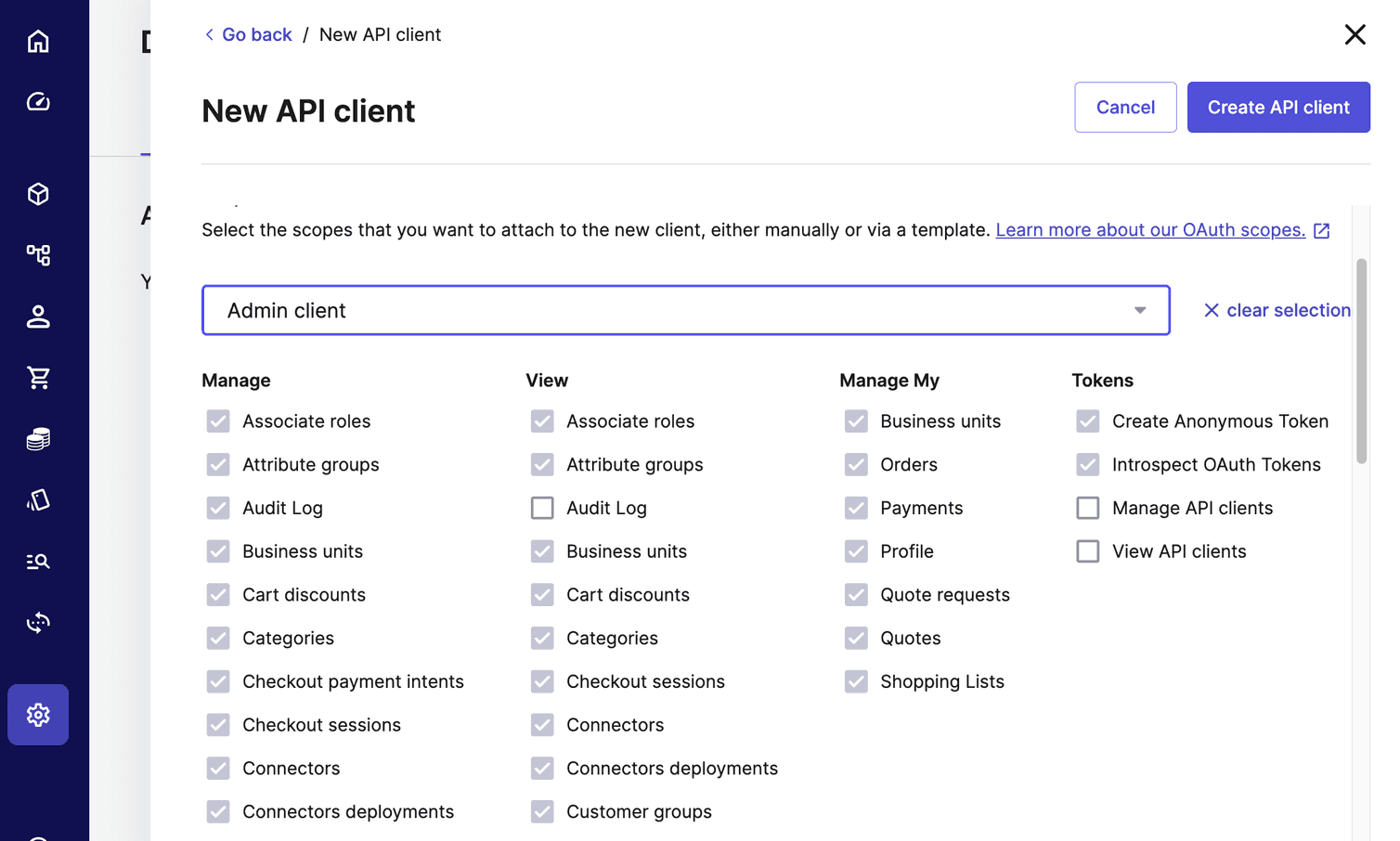Overview
To authenticate with Commercetools, you will need:- Client ID - The unique identifier for your API client, used to authenticate API requests.
- Client Secret - A secure key linked to your API client, required for authentication.
- Project Key - The unique identifier for your Commercetools project.
- Region - The full region identifier for your Commercetools project (e.g.,
europe-west1for GCP oreu-central-1for AWS). - Cloud Provider - The cloud provider hosting your Commercetools project (e.g.,
gcporaws).
Prerequisites:
- You must have a registered account with Commercetools.
- You need administrative access to your Commercetools project to create an API client.
Instructions:
Step 1: Create an API Client
- Log in to your Commercetools account and navigate to the Merchant Center.
- Go to Settings > Developer settings.
- On the API clients tab, click Create new API client.
-
On the New API client page:
- Enter a name for your API client. The name does not affect how the API functions.
- Select the scopes for your API client. To provide complete access, select Admin client. For security best practices, limit the scopes to the minimum required for your use case.
- Click Create API client.
-
After creation, your API client information will be displayed in the Client credential flow section. This includes:
- Project Key
- Client ID
- Client Secret
- Scope
- API URL
- Auth URL

Step 2: Save the API Environment Variables
- After creating the API client, you can save the credentials in an environment variables file for easy integration.
- From the drop-down menu, select Environment Variables (.env) and click the download icon.
- The file will be downloaded with a placeholder name based on your Project Key and the name of your API client (e.g.,
project-key_API-client-name.env). - Rename the downloaded file to
.envand open it with a text or code editor to view the credentials.

Step 3: Identify Your Region and Cloud Provider
You can identify your region and cloud provider in one of two ways:Option 1: From the Browser URL
- Log in to your Commercetools account and look at the URL in your browser. For example: https://ak.europe-west1.gcp.commercetools.com/nango-test/welcome
- Region:
europe-west1(the part afterak.and before.gcpor.aws). - Cloud Provider:
gcp(the part after the region and before.commercetools.com).
Option 2: From the API URL in the API Client Information
- After creating the API client, the API URL will be displayed in the Client credential flow section. For example: https://api.europe-west1.gcp.commercetools.com
- Region:
europe-west1(the part afterapi.and before.gcpor.aws). - Cloud Provider:
gcp(the part after the region and before.commercetools.com).
Step 4: Enter Credentials in the Connect UI
Once you have the Client ID, Client Secret, Project Key, Region, and Cloud Provider:- Open the form where you need to authenticate with Commercetools.
- Enter the Client ID, Client Secret, Project Key, Region, and Cloud Provider in their respective fields.
- Submit the form, and you should be successfully authenticated.
Need help getting started? Get help in the community.
Contribute improvements to this guide by editing this page.